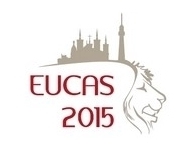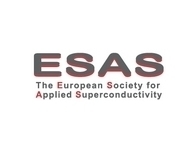


Special sessions
Special session on the new challenge of Superconducting computing
Chairs: Pascal Febvre and Hannes Toepfer
Driven by Internet traffic, cloud computing, smartphones usage and intensive data crunching applications, the growth of the number of supercomputers is nothing new. Energy consumption by large-scale computing systems is now a non-negligible financial burden. Cooling the cloud is on the business agenda and becomes an ecological issue. Industry of data centers faces the need of energy efficiency to reduce running costs: these account from 10 to 15% of the total cost of building and running a data center for 15 years1. In 2010, the worldwide energy drawn by routers and servers was between 1.1 and 1.5% (1.7 and 2.2% in the United States) of the worldwide energy production. In 2011 it was estimated to be 31 GW of electric power2.
As stated by the IARPA synopsis of the C3 (standing for Complex Cryogenic Computing) solicitation3, today’s high performance computers and the projected exascale computers are based on the same complementary metal-oxide-semiconductor (CMOS) technologies that have supported decades of continuous increase in computer performance. The improvement of performance has slowed down as the characteristic size of devices approaches atomic dimensions. Furthermore, the problem with projected energy demands based on CMOS technology continues without any solution in sight. Hence the decision in the United States to launch a ten years scale Cryogenic Computing Research & Development program to demonstrate a small-scale computer based on superconducting logic with cryogenic memory, that is energy-efficient, scalable, and able to solve crucial and complex problems.
While, in the past, significant technical obstacles prevented serious exploration of superconducting computing, recent innovations have created foundations for a major breakthrough. These include new families of superconducting logic without static power dissipation and new ideas for energy efficient cryogenic memory. A superconducting computer also promises a simplified cooling infrastructure and a greatly reduced footprint.
The special session on supercomputing has been set to present the current international status of superconducting computing. It will feature three talks presenting technologies, achieved results and expectations in Japan, United States and Europe. One talk will focus on the status of cryogenics suitable for the SC computers. Cryogenics is now a well mastered technology invisible for the user. At last one talk will focus on the current work about quantum computing that is currently seen as the next step towards advanced computing at a longer time scale.
A round table will follow the special session to address the requirements for a European initiative and, more generally, to discuss the needs and the actions to take in order to construct a solid technological basis for supercomputers of the future and advanced applications with similar requirements, like processing units for arrays of detectors for astronomy and security applications, for quantum circuits and for telecommunications and metrology applications.
Keynote speakers:
- Cryogenic Computer Complexity (C3) program for a new generation of superconducting supercomputers (M. Manheimer, IARPA, USA)
- Japanese efforts on superconducting supercomputers (A. Fujimaki, Nagoya University, Japan)
- State of the art of superconducting digital electronics and applications in Europe (T. Ortlepp, Technische Universitat ILMENAU, Germany)
- Cryogenics for superconducting supercomputers (A. Ravex, Absolut System, France)
- Superconducting processors of quantum information: state of the art, challenges and new routes (D. Estève, CEA-Saclay, France)
1 Rhonda Ascierto & Andy Lawrence, Will energy prices power US datacenter growth or short-circuit energy efficiency? 451Research’s Market Insight Service- DCT Data Center Technology (2013). https://451research.com/report-short?entityId=76124&tmpl=print&referrer=marketing
2 D. Scott Holmes, Andrew L.Ripple, Marc A.Manheimer, Energy-Efficient Superconducting Computing-Power Budgets and Requirements, IEEE Transactions on Applied Superconductivity 23, 171610 (2013) DOI : 11-1009/TASC.2013.2244634
3 Solicitation Number: IARPA-BAA-13-05
Copyright © EUropean Conference on Applied Superconductivity - All Rights Reserved





